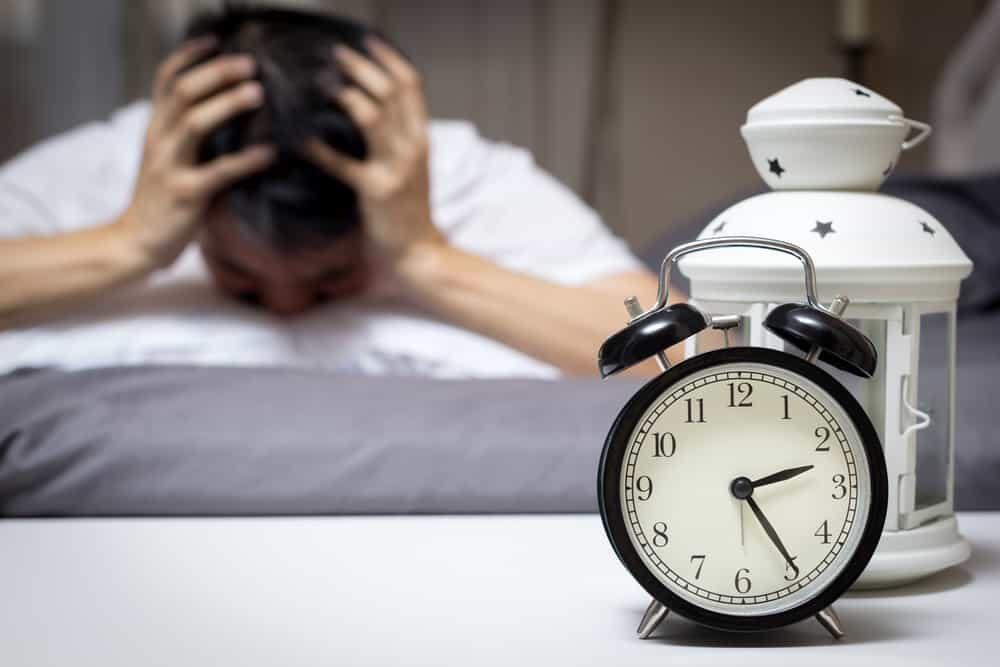Contents:
- Medical Video: A day in the life of a heroin addict
- What is alcohol withdrawal syndrome?
- How can alcohol withdrawal syndrome occur?
- Symptoms and characteristics of alcohol withdrawal syndrome
- What can be done to overcome the alcohol withdrawal syndrome?
Medical Video: A day in the life of a heroin addict
Alcoholic beverages are one type of beverage whose circulation is limited in Indonesia, this is because of the addictive side effects. Then what happens if someone stops consuming alcohol? There are further side effects if a person stops or abruptly reduces alcohol consumption. This is known as the alcohol withdrawal syndrome, or it can be called sakau. This is also a condition that can affect a person's health, from the appearance of mild symptoms to potentially death.
What is alcohol withdrawal syndrome?
Alcohol withdrawal syndrome is a collection of symptoms that arise in an alcoholic (alcoholic) who reduce or stop consuming alcohol. These symptoms will not be experienced by someone who does not routinely consume alcohol. Alcohol withdrawal symptoms can appear in about 6 hours to 2 days after the last alcohol consumption.
Alcohol withdrawal syndrome begins with mild symptoms such as nausea and dizziness, and can get worse as time passes for several days. There are symptoms called delirium tremens which needs to be addressed immediately because it can be fatal for sufferers.
How can alcohol withdrawal syndrome occur?
In general, alcohol withdrawal syndrome is experienced by adults who routinely consume alcohol every day, for long periods or years. The more often or more daily alcohol consumption, the greater the risk of someone experiencing it.
Alcohol withdrawal syndrome itself is a mechanism of the body and response to brain reactivity due to changes in the balance of consumption of alcohol (ethanol) from the origin of high to low. Alcohol consumption regularly changes the concentration and function of protein Gamma-aminobutyric acid and Excitatory amino acids, so that sudden changes in alcohol consumption patterns will have an impact on both proteins and cause alcohol withdrawal symptoms.
However, not all routine alcoholics who stop or reduce alcohol consumption will experience an alcohol withdrawal syndrome. This is thought to be due to genetic factors and health conditions that can worsen someone's alcohol withdrawal symptoms.
Symptoms and characteristics of alcohol withdrawal syndrome
There are several types of alcohol withdrawal symptoms that can be experienced by someone, including:
Mild alcohol withdrawal symptoms - due to brain hyperactivity, appears about 6 hours after consuming alcohol, marked by:
- Insomnia
- Shivering
- Mild anxiety
- Abdominal pain accompanied by anorexia
- Headache
- Sweating
- Heart palpitations (palpitations)
- Want to consume alcohol again
Alcohol withdrawal symptoms at this level can disappear and do not get worse if the patient returns to consuming alcohol within 24 to 48 hours of the onset of symptoms. However, similar disorders can reappear in subsequent episodes of mild alcohol crushing.
Seizures due to alcohol withdrawal - usually occurs within 12 to 48 hours of stopping consuming alcohol. This symptom only occurs in individuals who have consumed alcohol in decades. Immediate treatment with drug consumption is needed to ease the symptoms of seizures in individuals.
Hallucinations - can appear within 24 hours after not consuming alcohol at all and can last up to 48 hours ahead and can be continued with symptoms of delirium tremens. Hallucinations symptoms generally affect the sense of vision, but can also affect hearing. Hallucinations can also occur when the patient's vital condition is still normal.
Delirium tremens (DT) - is the most serious symptom of alcohol withdrawal syndrome. But not all people with alcohol breaks experience it, it is estimated that only 5% of patients experience DT. Someone who has DT will tend to hallucinate and experience disorientation accompanied by several physical signs such as increased heart rate and blood pressure and body heat. DT is considered serious because it occurs due to disruption of fluid and electrolyte hemostasis in individuals alcoholism which results in a reduction in blood flow to the brain and triggers heart failure.
What can be done to overcome the alcohol withdrawal syndrome?
Alcohol withdrawal symptoms can be stopped to get worse if someone actually stops consuming alcohol since the appearance of mild symptoms. Alcohol withdrawal symptoms will get worse in each episode according to the length of alcohol consumption regularly. Therefore, the effort that can be done is to stop the increasing severity of alcoholic beverages and prevent the occurrence of DT in patients.
Someone who has experienced symptoms of seizures and hallucinations due to alcohol withdrawal should seek treatment immediately. This is needed to monitor blood pressure, temperature, and heart rate in anticipation of DT. Patients may also need sedatives to deal with seizures and hallucinations.
The recovery of patients with alcoholic syndrome depends on the damage and function of the body in adapting again and how well the development stops from consuming alcohol. Most alcohol withdrawal symptoms can disappear completely, but the risk of death persists, especially if DT occurs.












